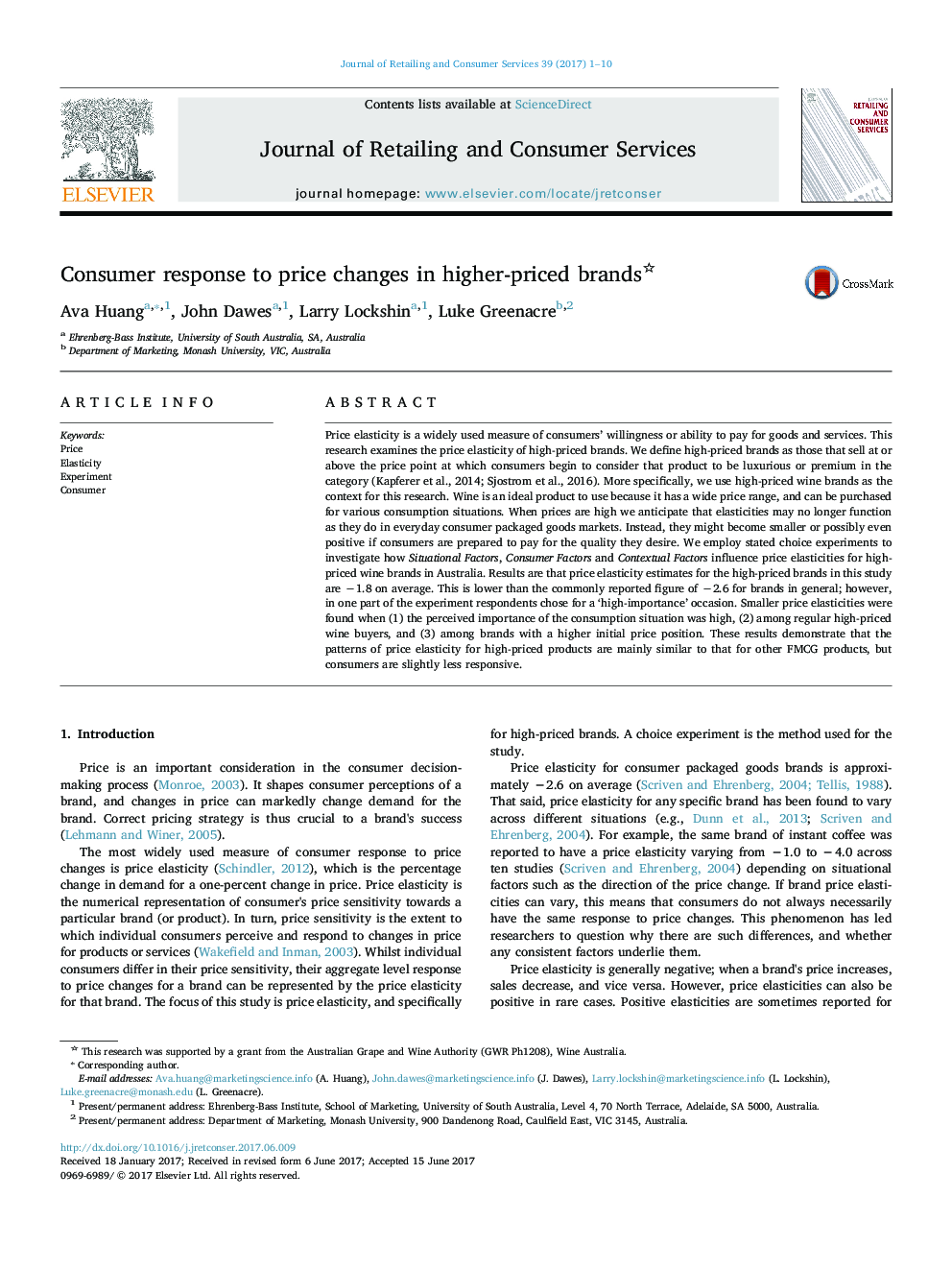| Article ID | Journal | Published Year | Pages | File Type |
|---|---|---|---|---|
| 5111316 | Journal of Retailing and Consumer Services | 2017 | 10 Pages |
Abstract
Price elasticity is a widely used measure of consumers' willingness or ability to pay for goods and services. This research examines the price elasticity of high-priced brands. We define high-priced brands as those that sell at or above the price point at which consumers begin to consider that product to be luxurious or premium in the category (Kapferer et al., 2014; Sjostrom et al., 2016). More specifically, we use high-priced wine brands as the context for this research. Wine is an ideal product to use because it has a wide price range, and can be purchased for various consumption situations. When prices are high we anticipate that elasticities may no longer function as they do in everyday consumer packaged goods markets. Instead, they might become smaller or possibly even positive if consumers are prepared to pay for the quality they desire. We employ stated choice experiments to investigate how Situational Factors, Consumer Factors and Contextual Factors influence price elasticities for high-priced wine brands in Australia. Results are that price elasticity estimates for the high-priced brands in this study are â1.8 on average. This is lower than the commonly reported figure of â2.6 for brands in general; however, in one part of the experiment respondents chose for a 'high-importance' occasion. Smaller price elasticities were found when (1) the perceived importance of the consumption situation was high, (2) among regular high-priced wine buyers, and (3) among brands with a higher initial price position. These results demonstrate that the patterns of price elasticity for high-priced products are mainly similar to that for other FMCG products, but consumers are slightly less responsive.
Keywords
Related Topics
Social Sciences and Humanities
Business, Management and Accounting
Marketing
Authors
Ava Huang, John Dawes, Larry Lockshin, Luke Greenacre,
